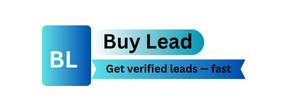Effective content writing goes far beyond mere words. It involves a strategic understanding of how information is connected. For any piece of content to truly thrive online, it needs robust support. This support often comes in the form of intelligent linking. Both external and internal backlinks play a crucial role in this process. They guide readers and search engines alike. Mastering these elements is vital for digital success.
A well-structured linking strategy boosts your content’s visibility. It improves its overall authority. This holistic approach ensures your content performs optimally. It meets both user intent and search engine requirements. Without a deliberate linking plan, even the most compelling articles can get lost. Let us explore the power of strategic links.
The Core of Content Writing: Strategic Linking for SEO Success
Content writing is not just about producing engaging text. It also involves optimizing that text for search engines. Strategic linking forms a critical part of this optimization. It helps search engines understand your content’s context. Links also demonstrate its relevance and authority. When done correctly, linking can significantly improve rankings. It enhances the overall user experience on your website.
Every link serves a purpose. It directs users to more information. It signals importance to search engine crawlers. A strong link profile is essential for any content strategy. It connects your ideas meaningfully. This practice builds a web of interconnected knowledge. Both external and internal links contribute uniquely to this goal. They are two sides of the same SEO coin.
Elevating Authority with Purposeful External Backlinks in Content
External backlinks, often called outbound links, direct users away from your site. They point to other reputable sources. These links are incredibly important for content writing. They signal trust and credibility to your readers. Linking to authoritative sites shows thorough research. It demonstrates a commitment to accuracy. Search engines favor content that offers reliable information. Quality external links reinforce this. They enhance the perceived value of your own content.
Choosing the right sources for your External Backlink strategy is key. Opt for industry leaders and well-respected academic papers. Avoid linking to low-quality or irrelevant websites. Such links can harm your site’s reputation. Contextual relevance is paramount. The anchor text for these links should be natural. It must accurately describe the linked page. Thoughtful external linking establishes your content as a hub of reliable information.
Mastering Internal Backlink Strategies for Enhanced Content SEO
Internal backlinks connect pages within your own website. They are fundamental for content writing and SEO. These links help search engines crawl and index your site more effectively. They distribute “link equity” or “PageRank” across your pages. This strengthens the authority of individual articles. Internal links also vastly improve user navigation. They guide visitors to related content. This keeps them engaged on your site for longer periods.
A robust Internal Backlink structure creates topic clusters. These clusters help search engines understand the breadth of your expertise. For example, a pillar page might link to several supporting articles. Each supporting article then links back to the main pillar. This method improves the overall SEO performance. It makes your content more discoverable. Strategic internal linking is within your full control. It is a powerful tool for content writers.
The Synergistic Power of Both Link Types in Content Creation
Both external and internal backlinks work in harmony. They create a robust and interconnected content ecosystem. External links lend credibility and external validation to your content. Internal links strengthen your site’s architecture. They enhance the user journey. Together, they create a powerful SEO advantage. A balanced approach leverages the strengths of each. This leads to better search engine rankings.
Content writers must consider both link types during creation. Plan your linking strategy from the outset. Identify relevant internal pages to link to. Research reputable external sources for supporting facts. This integrated approach benefits your readers immensely. It reduces bounce rates by providing relevant follow-up content. It builds a comprehensive and authoritative online presence.
Implementing Advanced Linking Best Practices for Content Optimization
Effective link implementation requires careful attention to detail. Use descriptive and relevant anchor text for all links. Avoid generic phrases like “click here.” Instead, use keywords that describe the linked content. Ensure your links are contextually relevant within your paragraphs. They should feel natural to the reader. Over-optimizing anchor text with exact keywords can be detrimental. Strive for natural language variations.
Regularly audit your existing links. Check for broken links, which can harm user experience. Update outdated external references if newer, better sources exist. Continually look for opportunities to add new internal links. This is especially true when publishing new content. A proactive linking strategy is key for long-term content writing success. It keeps your website authoritative and user-friendly. Always prioritize value for your audience.
